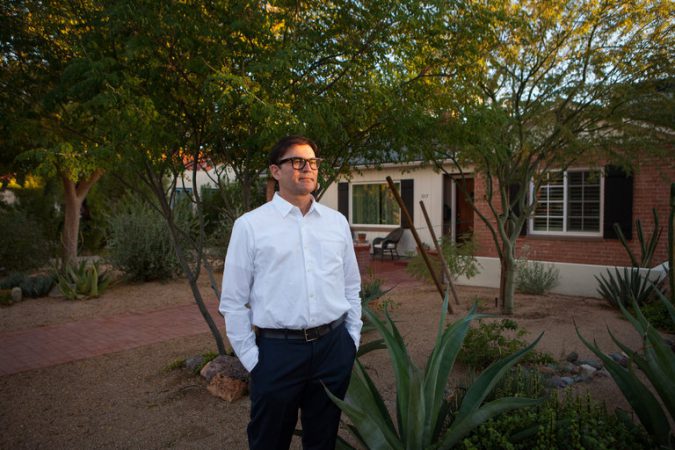
Mortgage Rates’ Rise Catches Home Buyers — and Lenders — Off Guard
When Jared Rutledge called his mortgage broker one morning last week after putting in an offer on a home in Glendale, Ariz., just west of Phoenix, he discovered that the 3.8 percent rate he had been quoted a couple of months ago had already gone up to 4.125 percent. That afternoon, it had inched up to 4.25, and by evening, when he finally called back to finalize the deal, it was 4.375 percent.
“I was kind of frustrated,” Mr. Rutledge said. But with a third child on the way, and a buyer for their current home, he and his wife felt they had little choice. “Instead of holding out and waiting, we locked it in,” he said.
Since the election, mortgage rates have climbed roughly half a percentage point to a 16-month high, adding hundreds, sometimes thousands, of dollars to a home buyer’s yearly payments. (The annual cost of a $400,000 mortgage, for example, rose almost $700.)
The speed and size of the increase took many lenders and borrowers by surprise — and the increase is expected to reverberate across the housing industry, particularly if rates continue to rise next year.
“Anybody who was floating or didn’t lock in a rate is screaming at their lender: ‘How could you do this to me?’” said Guy D. Cecala, chief executive and publisher of Inside Mortgage Finance. “It shot up from 3.5 to 4 percent virtually overnight,” he said, referring to the average 30-year fixed-rate mortgage.
Continue reading the main story
“Does it give people pause? Does it raise the cost of buying a home?” Mr. Cecala asked. “Yes and yes.”
For most of this year, American home buyers have benefited from weakness in the global economy. China has been struggling to sustain the rapid growth it needs to avoid political unrest, a deep recession followed political turmoil in Brazil, and a cloud of uncertainty hangs over Europe after Britain’s vote to leave the European Union.
Those factors, on top of efforts by central banks around the world to stimulate economic activity by keeping short-term interest rates low, have increased demand for safe American assets like government bonds and mortgage-backed securities. The result: The cost for American businesses and consumers to borrow had, until recently, remained exceptionally low.
The turnaround, which was driven by postelection market expectations that a President Trump would lift corporate profits, cut taxes and spend money on infrastructure and roads, caught most experts by surprise. The online real estate brokerage Redfin, for example, had initially forecast that rates for 30-year fixed mortgages would remain below 4 percent through next year, said Glenn Kelman, the company’s chief executive.
Redfin has now updated its forecast and is predicting the 30-year mortgage rate will pass the 4 percent threshold. “I think you’re going to see higher rates than we otherwise would have,” Mr. Kelman said, “but more economic stimulus.”
Wall Street is also expecting that the Federal Reserve Bank will increase its benchmark interest rate when it meets next month. That rate — the cost that banks and depository institutions charge one another for overnight loans — has only an indirect impact on mortgage rates. Last December, for instance, after the Fed raised rates by a quarter of a percentage point, mortgage rates went down. But to the extent it reflects the Fed’s confidence in an improving economic outlook, it could signal higher borrowing costs in the months ahead.
For now, said Svenja Gudell, chief economist at Zillow, a real estate data provider, the relatively modest increase in mortgage rates should not have much impact on the current housing market.
“Most consumers don’t make decisions based on a change in mortgage rates,” Ms. Gudell said. “We’re dealing with such a tight inventory, I think they’re more focused on finding a home that they can afford. If mortgage rates go up by half a percent, that’s not going to make them change their minds.”